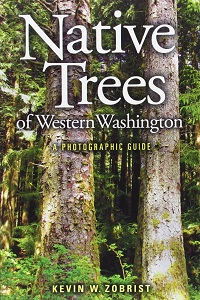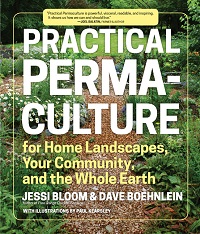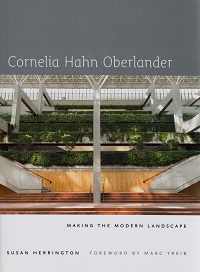
In the summer of 2013, I visited Vancouver, B.C. Across the street from my hotel was a wonderful urban space, Robson Square; I spent one morning of my precious two days exploring this space. On the same trip I visited the dazzling new visitor center at the VanDusen Botanical Gardens. Although these two projects had widely spaced completion dates (1983 and 2011), the landscape architect for both projects was Cornelia Hahn Oberlander, the subject of a new biography by Susan Herrington.
Oberlander, in addition to being one of the premier landscape architects of our region, has lived a fascinating life – she and her family escaped Nazi Germany shortly before World War II. She graduated from the Harvard Graduate School of Design in 1947, one of the first women to do so, and spent several years of her early career on projects in Philadelphia “…working directly with communities and incorporating their views into the design process.”
She and her husband moved permanently to Vancouver in the late 1950s when the city was…”a tiny town…I was able to conquer new ground. In the east I would have never been able to do that.” She also became a mother and this perhaps led to a strong interest in the design of playgrounds, using her three children as subjects in her research on what design elements work from a child’s perspective. One of her most famous projects was the outdoor play environment at Expo 67 in Montreal, which proved more popular than the more structured, indoor Children’s Creative Centre it adjoined.
The Jim Everett Memorial Park on the University of British Columbia campus is one of Oberlander’s more recent projects (2002). Intended for the children of students living in nearby university housing, the challenges were significant: liability issues surrounding playgrounds have tightened in recent years and there were already several demands on the space for junior soccer, festivals, and providing pleasing views from the resident’s apartments. The results relied on a landscaping – berms, sunken ovals, and small mounds – and limited hardscape, mostly seating areas for the parents, to create the play space. There is no playground equipment. In the planning state, one member of the public declared a “playground without a swing-set, slides, and teeter-totters was un-Canadian!” This same parent, observing her children happily at play in the completed park, commented to Oberlander that this was “not so much a Canadian playground as a human one.”
While these small scale projects have been very successful, Oberlander is best known for her larger works, which include subjects in a wide range of settings and climate zones such as the Museum of Anthropology at the University of British Columbia (1976 and 1997), the Legislative Assembly Building in Yellowknife, Northwest Territories (1994), and the courtyard of the New York Times building (2007).
Excerpted from the Fall 2015 Arboretum Bulletin.
 Intrigued by all those Irish gardens with lyrical names? The beauty and glory of these can be found in The Irish Garden, a new, coffee table-worthy book from Jane Powers (writer) and her husband Jonathan Hession (photographer). While its majestic cover and heft will impress your friends, don’t just leave it on the table unopened, because it’s one of the best books on the gardens of a particular region that I know, with the writing, photography, and publication values all top notch.
Intrigued by all those Irish gardens with lyrical names? The beauty and glory of these can be found in The Irish Garden, a new, coffee table-worthy book from Jane Powers (writer) and her husband Jonathan Hession (photographer). While its majestic cover and heft will impress your friends, don’t just leave it on the table unopened, because it’s one of the best books on the gardens of a particular region that I know, with the writing, photography, and publication values all top notch.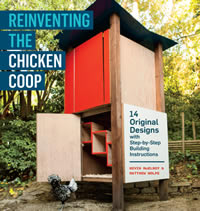 As a new graduate of the University of Washington’s Library and Information Science Master’s program, I began volunteering at the Miller Library in July 2011. I had some experience in academic libraries, and had worked as a student assistant in the UW’s Natural Sciences Library. After I began volunteering, I started reading and checking out several books on fruit and vegetable gardening. The books were great, and really helped me learn how to grow food.
As a new graduate of the University of Washington’s Library and Information Science Master’s program, I began volunteering at the Miller Library in July 2011. I had some experience in academic libraries, and had worked as a student assistant in the UW’s Natural Sciences Library. After I began volunteering, I started reading and checking out several books on fruit and vegetable gardening. The books were great, and really helped me learn how to grow food.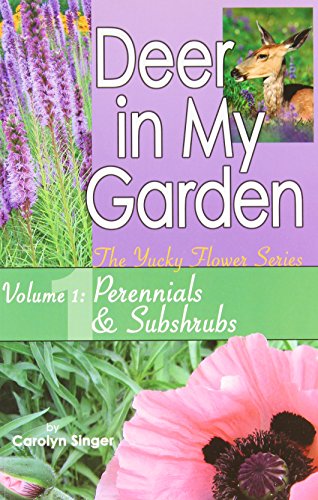 Grass Valley, California is on the outer rim of our region, but the resident gardening columnist Carolyn Singer is worth knowing about, especially for gardeners in the foothills of the Cascades. She is very experienced with the ravages of deer, and address this concern in two books. “Deer in My Garden” (2006), was largely written while the author spent the summer of 2005 in Seattle and focuses on perennials and subshrubs. “Deer in My Garden: Volume 2” (2008) considers the impact on groundcovers and garden edge plants.
Grass Valley, California is on the outer rim of our region, but the resident gardening columnist Carolyn Singer is worth knowing about, especially for gardeners in the foothills of the Cascades. She is very experienced with the ravages of deer, and address this concern in two books. “Deer in My Garden” (2006), was largely written while the author spent the summer of 2005 in Seattle and focuses on perennials and subshrubs. “Deer in My Garden: Volume 2” (2008) considers the impact on groundcovers and garden edge plants.


